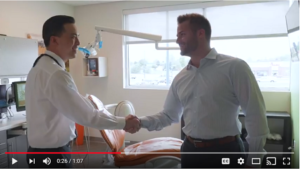The Cost to Build

Saving money for your practice the wrong way can lead to diminished patient care, outdated equipment, the wrong location and additional negative results. Conventional wisdom tells us that spending less money is the most effective approach to saving money. After all, a penny saved is a penny earned and the more you save, the more you have left over. That logic is hard to argue with, but it is not always fool proof.
There are several critical factors often overlooked when a healthcare practice’s primary focus is paying the lowest rent vs. achieving the best combination of overall terms. Let’s look at three factors where paying higher rent could actually increase your profitability.
One important factor often overlooked in the attempt to save money is the cost to build.
Healthcare buildouts often cost two-to-three times more than a typical commercial real estate space. This is attributed to many factors that are unique to healthcare, including:
- More durable finishes
- Millwork and cabinetry
- Plumbing and sinks in exam rooms, sterilization centers and laboratories
- Increased electrical and HVAC requirements (heating, ventilation and air conditioning)
- And several more
Three of these costs alone: HVAC, Electrical and Plumbing, drive up the cost considerably for healthcare buildouts when compared to non-healthcare uses.
With buildout being such a costly expense, many healthcare professionals get themselves into trouble when they only focus on the lowest lease rate. The reason this can be a costly mistake is because the landlord often cares the most about maximizing the property’s income, which is primarily driven by the lease rate.
The NOI (Net Operating Income) is the main number an appraiser or investor looks at when valuing an investment property; which again, is derived from the lease rate. Savvy landlords recognize this and would often rather invest more money into their space while providing other concessions such as free rent, lower annual escalations and tenant improvement allowance as opposed to lowering their lease rates. To a landlord, lower lease rates devalue capitalization potential should they decide to sell the property.
For example:
- A Landlord has a 2,000 SF vacant space listed for lease at $4,000 per month on a 10-year lease term
- A doctor wants to lease the space for the lowest lease rate possible
- The doctor offers the landlord $3,250 per month to get the lowest monthly rent
- The landlord proposes keeping the rent at $4,000/month but is willing to give the tenant $100,000 and 5 months of free rent to buildout the space plus 3 months of free rent upon opening for business
In this instance, the Doctor would be spending $90,000 more in rent over the 10-year lease term (assuming the landlord would agree to the lower proposed monthly rent). However, the doctor would be better taking the landlord’s higher-rent offer because they would be saving $100,000 on the buildout loan, receiving $12,000 in free rent (plus a free build out period) and saving an additional $27,000 on loan interest expense (assuming a 10-year loan term at a 5% interest rate). In this instance, the lower rent would have cost the doctor almost $50,000 more in total expenses!
Additionally, with paying higher rent / monthly lease rate, the doctor would receive a higher level of tax deductions as rent is 100% deductible. Conversely, some of the additional loan costs are not deductible and a portion of what the loan was spent on would need to be depreciated over a longer period of time to account for the build out.
From the landlord’s perspective, this deal is more appealing with the higher lease rate and more concessions because the $112,000 tenant improvement and free rent allowance today will be primarily recaptured through rental income over the lease term. More importantly, it saves the Landlord from devaluing the property by over $128,000 when compared to lowering the lease rate (assuming a 7% cap rate which is a conservative rate in today’s commercial real estate market). This same approach and value carried over the entire property could save the landlord $500,0000 to $1,000,000 on an average sized property at the time of sale.
In this scenario, the landlord is much more likely to perform the transaction while the doctor would save well over $50,000 compared to seeking only the lowest monthly rent! Both the landlord and doctor win.
The steps and details required to build a new office space or open your first practice should always be handled with expert representation. The right person will be able to help you assemble a skilled team that will help turn your dream into a reality. It is important to hire representation that has no conflicts of interests and only represents you, the tenant or buyer. Proper representation will ensure you avoid costly pitfalls while saving you a substantial amount of time and money.
Click the button below to begin your free, no-obligation evaluation of your current or proposed terms. When you do, complete the simple form and an expert broker will contact you right away to help determine the best course for your practice.
CARR Healthcare is the nation’s leading provider of commercial real estate services for healthcare tenants and buyers. Every year, thousands of healthcare practices trust CARR to achieve the most favorable terms on their lease and purchase negotiations. CARR’s team of experts assist with start-ups, lease renewals, expansions, relocations, additional offices, purchases, and practice transitions. Healthcare practices choose CARR to save them a substantial amount of time and money; while ensuring their interests are always first. carrusoldtheme.wpengine.com
To hear more about why it is so important to have expert representation, watch the video below.

